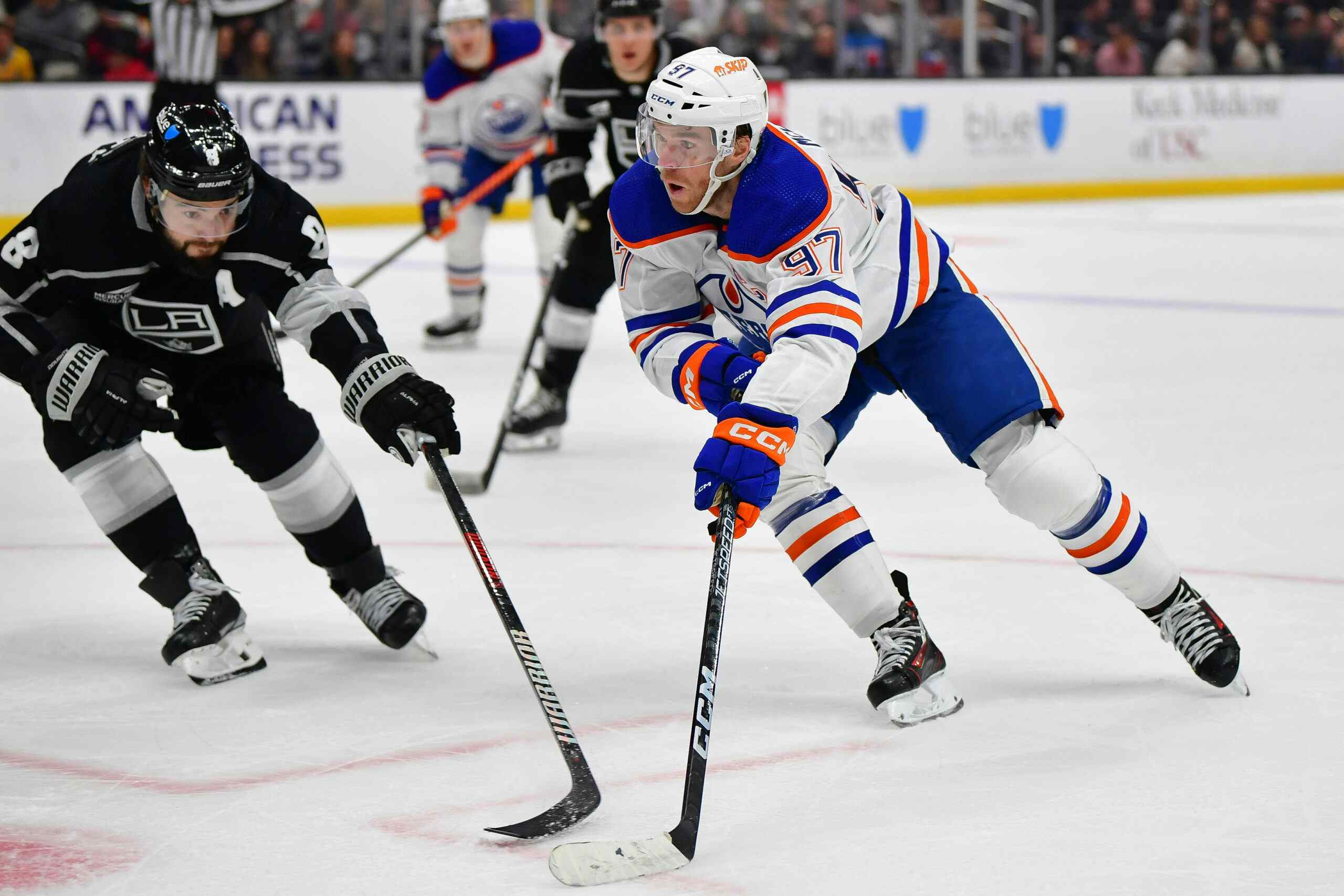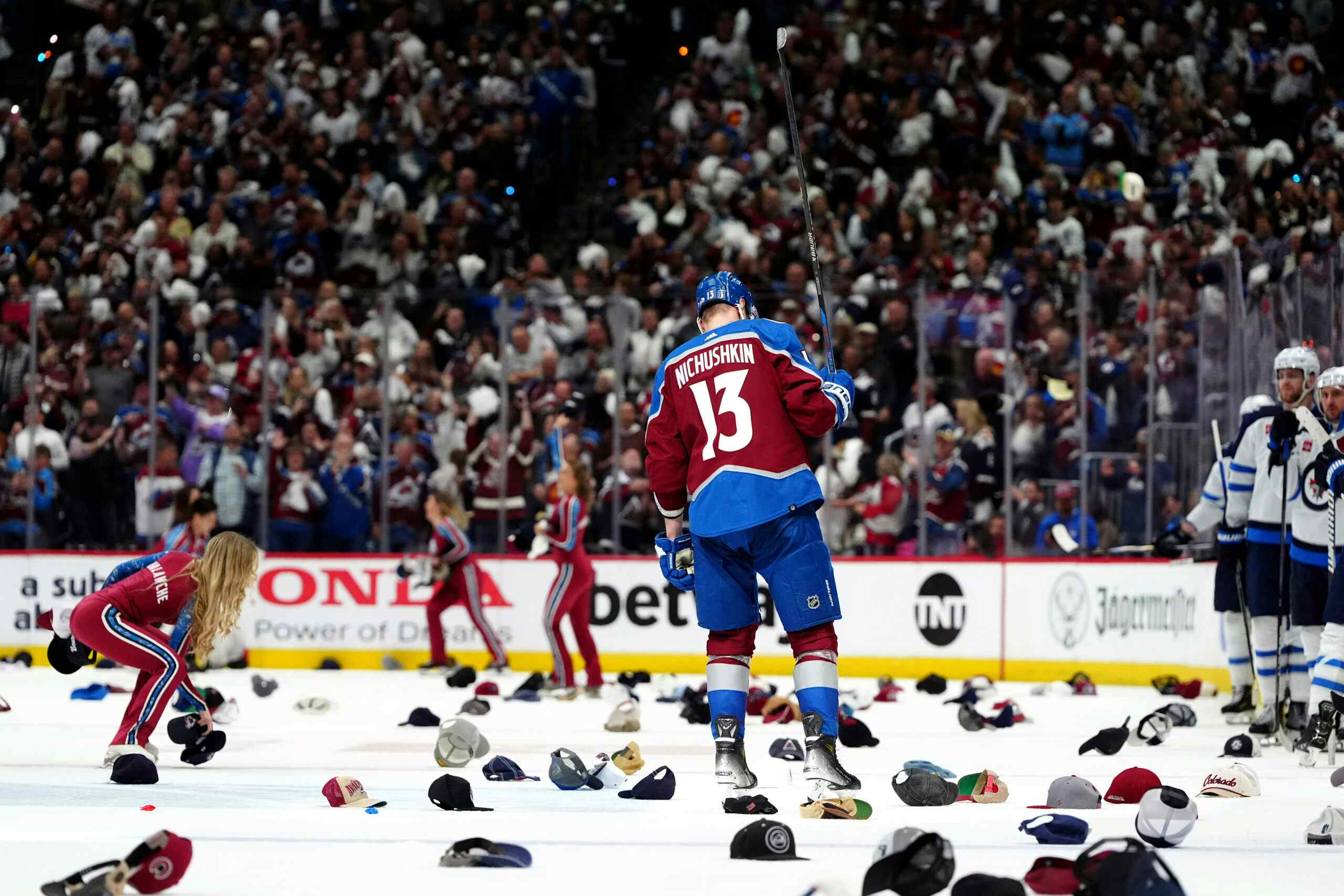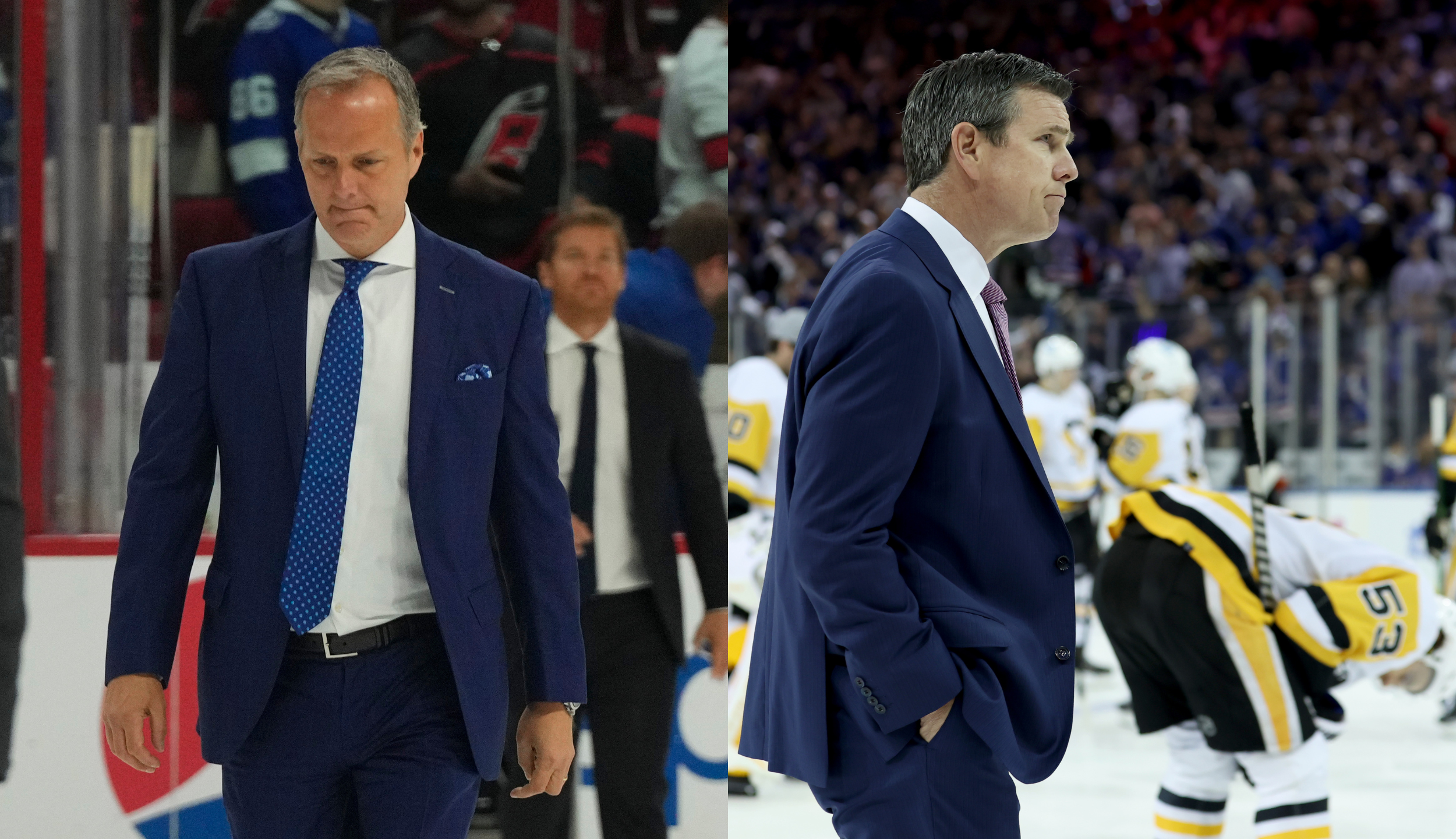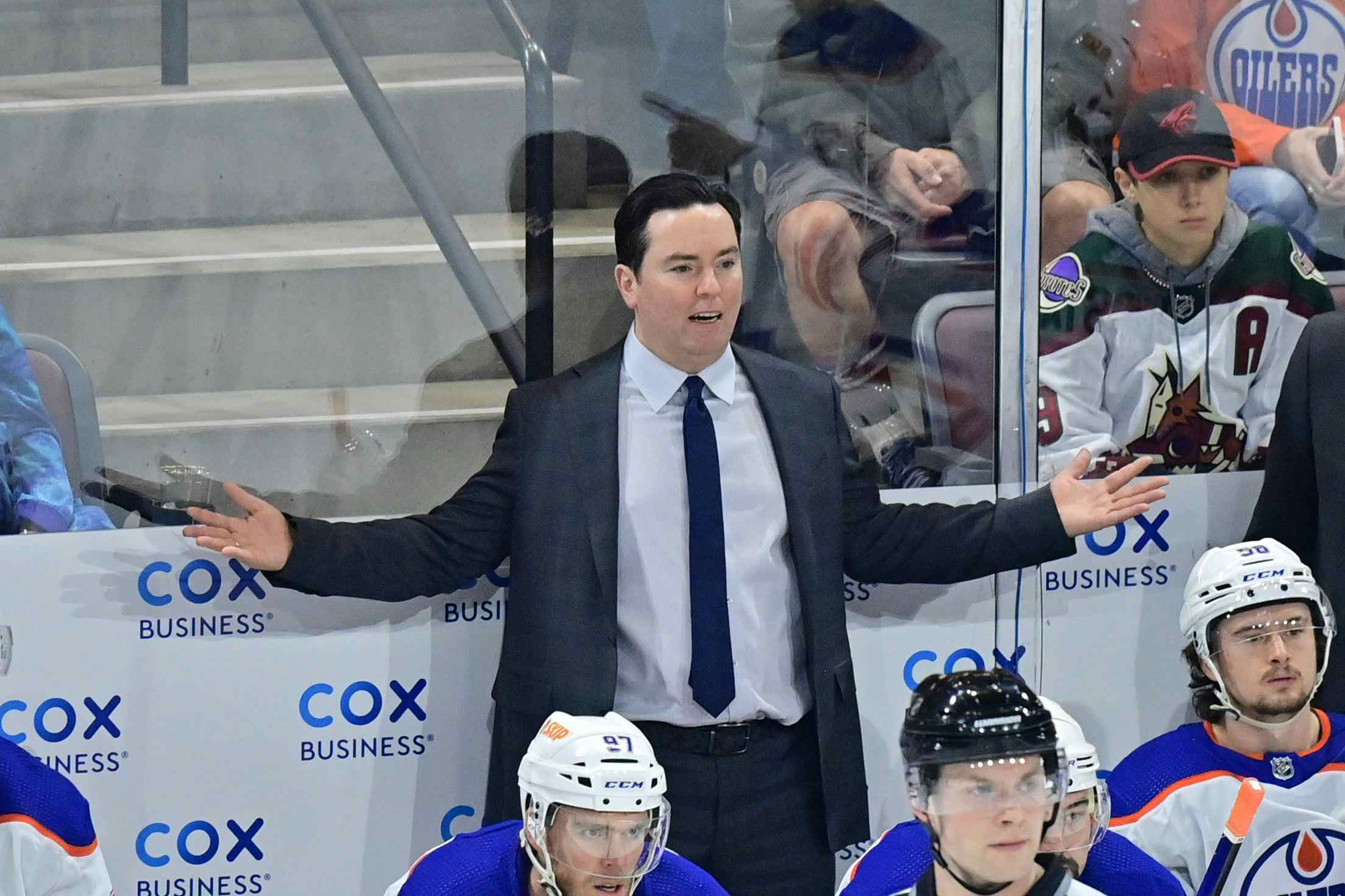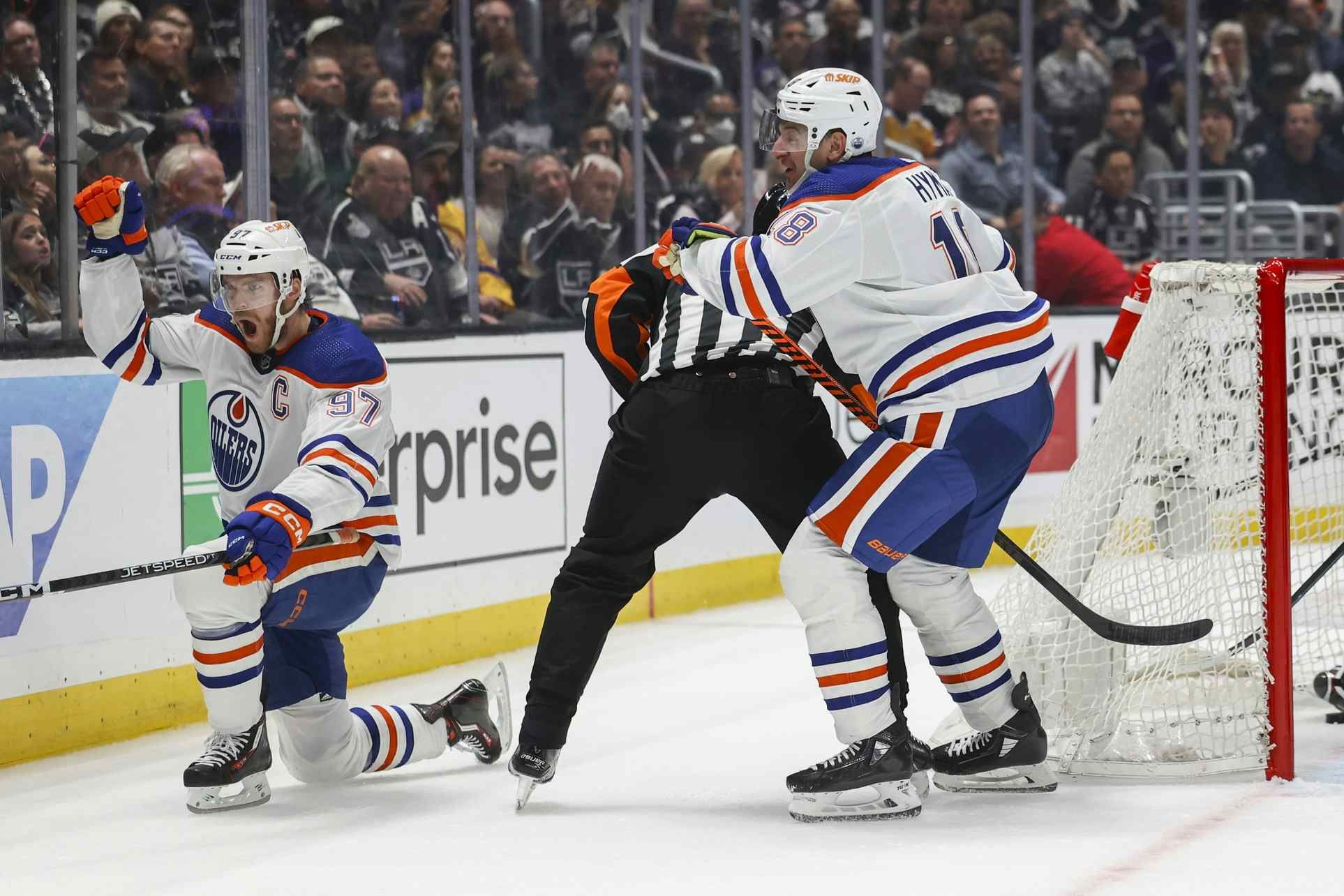YOU TAKE THE VAN, I’LL KEEP THE DOG
By Lowetide
11 years ago
Looking at the current OKC Barons, I’m reminded of a dozen years ago, when the draft and logic told us Michel Riesen would be the AHL player to emerge from the Oiler minor league system as a quality player. Well, draft and logic lost out to a 5th round pick named Jason Chimera. How can we apply those lessons to the current Barons?

Over the last 16 winters, the Oilers have had many draft picks arrive at the pro level (age 20) and fail miserably in their efforts to make it to the NHL. Of those who did make an NHL impact, all of them could be described as "role" players–two-way centers and wingmen, checkers, penalty killers, enforcers, fringe players. Is there any way the numbers can tell us which of the current roster will make it as a regular?
Lets look at the last 15 seasons (forwards) to see if the boxcars indicate something.
POINTS PER GAME AT AGE 20 (AHL) 1997-2012 OILERS FARM TEAMS

- Michel Riesen (99-00 Hamilton Bulldogs). 73gp, 29-31-60 .822ppg Riesen’s quality AHL season at 20 is somewhat misleading in that it was his second year in the league. He played well no matter the circumstance, so well that his entire line (Swanson-Riesen-Cleary) won jobs in the fall of 2000 on the big club. His 99-00 AHL season and the pre-season in fall 2000 represent the highlight of his NHL career (plus the 12 games he actually got into 00-01).
- Steve Kelly (96-97 Hamilton Bulldogs). 48gp, 9-29-38 .792ppg Kelly was a speed demon who the Oilers liked a “hair” more than Shane Doan at the draft in 1995. His pro debut wasn’t Doan-like (Doan had played over 130 NHL games by the spring of 1997) but he held his value better than did Jason Bonsignore and ended up having a better (if hugely disappointing) NHL career. Kelly’s career GP stands at 149, compared to Bonsignore’s 79.
- Rob Schremp (06-07 SWB Penguins) 69gp, 17-36-53 .768ppg Schremp had a tough first year pro, getting benched a few times and was a healthy scratch a few times too. His coach did have some nice things to say about him but for this kid it was a combination of skating and play away from the puck. 114 NHL games at this point.
- Magnus Paajarvi (11-12 OKC Barons) 34gp, 7-18-25 .735ppg. Unusual that he’s on the list, in that he spent his 19-year old season in the NHL. Still, one of the negatives thrown at MP is his lack of offense and in fact he rates well compared to other 20-year olds who have come through the system over the years.
- Jarret Stoll (02-03 Hamilton Bulldogs) 76gp, 21-33-54 .711ppg The two things I remember about Stoll in the AHL are a goal he scored maybe 5 seconds after the faceoff at center-ice and that the “shared” Habs/Oil team that year was a beauty. Stoll played with really good players and had an excellent season, which he has since built upon to become a solid NHL player. Stoll has played 593 NHL games and of course was part of the LAK Stanley this spring.
- Marc Pouliot (05-06 Hamilton Bulldogs) 65gp, 15-30-45 .692ppg Pouliot played on a shared team (like Stoll) and put up similar offensive results. Pouliot was a personal favorite of mine, but never found a role he could play. Injuries impacted this player, he did get into 192 NHL games.
- Jason Bonsignore (96-97 Hamilton Bulldogs). 78gp, 21-33-54 .692ppg Bonsignore’s career has been well documented and his 20-year old AHL season placed in context (he was the 4th player chosen two years previous and 96-97 was the year Ryan Smyth popped 39 goals in the show) was a pretty good predictor of his future. Six months after the 96-97 season Sather offloaded him (and Steve Kelly) to the Lightning.
- Peter Sarno (99-00 Hamilton Bulldogs). 67gp 10-36-46 .687ppg Sarno was an interesting prospect who ended up with 7 career NHL games for two different teams (Oilers and Columbus). He gained a solid reputation as a powerplay specialist and got a couple of long looks from the Oilers.
- Jean Francois Jacques (05-06 Hamilton Bulldogs) 65gp, 24-20-44 .677ppg Jacques had a helluva pro debut and the Oilers thought they had lightning in a bottle. Crazy Train was fast, physical and scored goals–that’s a rare item. Alas, injuries derailed him and a long dry spell in goal scoring at the NHL level placed his career in limbo. Sits at 166 NHL games.
- Teemu Hartikainen (10-11 OKC Barons). 66gp, 17-25-42 .636ppg Big Finn had one of the stronger pro debuts in recent Oiler minor league history. Gives his team a combination of size and skill, and the Oilers have him "in the mix" with men like Magnus Paajarvi as future wingers. I think his value is strong enough that if he doesn’t win a job another NHL team might find him worth acquiring. Suspect he has at least one more year to prove himself to the organization.
- Kyle Brodziak (04-05 Edmonton Roadrunners) 56gp, 6-26-32 .571 Is best known as the guy Lorne Davis argued for at the draft table the season BEFORE the club finally selected him. Brodziak was taken in the depth of the draft but has outperformed the rest of the Oilers picks that season (2003) by a wide margin. 419 NHL games and counting.
- Jani Rita (01-02 Hamilton Bulldgos) 76gp, 25-17-42 .553ppg I thought Jani Rita would make it, swear to God. I remember at WJC goal he scored (it was real, and it was spectacular) and also saw a few AHL games in which he always looked like he was having an impact. He never made it, but that first AHL season would have to rank as one of the best on this list (and I believe Dennis will back me up on that). Rita played 66 NHL games total, but has had some terrific seasons in Finland.
- Slava Trukhno (07-08 Springfield Falcons). 64gp, 14-21-35 .547 Young man put up solid junior numbers after being drafted, and showed some offensive flashes in the AHL. However, he went the wrong way as a prospect after his rookie season and didn’t make an NHL appearance.
- Georges Laraque (96-97 Hamilton Bulldogs). 73gp, 14-20-34 .466ppg Laraque is the only one of the three 20-year old AHL prospects in 96-97 to become an NHL player and contribute to his team’s wins. Laraque’s ppg total in the AHL indicated he was marginal offensively (plus it’s extremely unlikely he saw the PP or many skill linemates) but he was an enforcer of some quality and in that role has had a very good NHL career. Laraque played 695 NHL games, making him a star on this list. We’d do well to remember the player types who emerge from the AHL.
- Phil Cornet (10-11 OKC Barons) 60gp, 7-16-23 .383ppg. Cornet didn’t get a lot of playing time in year one with OKC, but improved a great deal in 11-12, leading the team in goals. Currently in Stockton and playing well.
- Tyler Pitlick (11-12 OKC Barons) 62gp, 7-16-23 .371ppg. Pitlick was 19 for a portion of his rookie season, so one could also run his current season on this list. However, I think the point of the exercise is to show that 20-year old seasons in the AHL don’t guarantee or doom a player based on the boxcars. I think the name below is a very good comp for Pitlick.
- Jason Chimera (99-00 Hamilton Bulldogs). 78gp, 15-13-28 .359ppg Chimera is best known among Oilers fans as being the guy Kevin Lowe would talk up every summer as being a lock for the roster only to be sent out each fall by Craig MacTavish. To this day he rarely passes on a chance to dig at the Oilers. Chimera was a speed demon with size and an energy player as a rookie pro, and has built on that and has an NHL career. He has played 663 NHL games and counting, and should be considered one of the best players on this list. Notice the AHL point total? The AHL develops more than offense.
- Curtis Hamilton (11-12 OKC Barons) 41gp, 5-6-11 .268ppg Injuries impacted Hamilton in year one and I’d argue he wasn’t getting a lot of TOI in the games he was in last season. Still, it does give us an indication about the major step between junior and the AHL (Hamilton was an offensive star in the WHL).
- Zack Stortini (05-06 Iowa/Milwaukee) 64gp, 2-8-10 .156ppg Big winger played 257 NHL games before Tom Renney pulled the plug due to foot speed. I wouldn’t bet against him getting another chance somewhere down the line.
- Cameron Abney (11-12 OKC Barons) 14gp, 0-0-0 .000ppg. Enforcer type spent most of his 20-year old season in the ECHL (.172ppg) and if there’s one thing this list shows its that counting Abney out is a mistake. The AHL is the place where enforcers develop and prove themselves.
QUESTIONS, QUESTIONS

- Of those players who do stay in the minors, what player type most often succeeds? Enforcers and skill players with an idea about playing the game without the puck. The men who made it–Jason Chimera, Kyle Brodziak, Jarret Stoll–all had some range of skills and worked hard to overcome the things that kept them outside the first round. For Brodziak and Stoll, part of the problem was skating–same issue as Schremp. For Chimera–like Paajarvi–offense wasn’t as obvious as it might have been in other prospects.

- How many of the truly skilled players spend a season or more in the minors, adjust their game enough to survive as a skill player, and then establish themselves as NHL players? Not many. On our list Kelly, Bonsignore, Riesen, Sarno and Schremp all failed. One dimensional offensive players who don’t have enough offense to make the NHL right off the bat are probably doomed. Schremp would be a strong example.
WHO WERE THE BEST PLAYERS OVER THE PERIOD?

Jarret Stoll, Jason Chimera, Kyle Brodziak, Georges Laraque. That’s my list, your mileage may vary. All of them survived in the NHL for a long period of time (about 2,500 games and counting) and all passed any number of first round picks on their way to success.
WHO WILL EMERGE FROM THE CURRENT GROUP?

(photo of Antti Tyrvaninen and Curtis Hamilton courtesy of Rob Ferguson. All rights reserved)
I’ll guess Magnus Paajarvi, Teemu Hartikainen and Tyler Pitlick. However, in doing that I’m picking a first rounder and an early second round selection. I think the lesson here is that the 20 and 21 year olds currently in OKC are all on a level playing field and that consistency of performance matters a lot.
Take Curtis Hamilton as an example. After a frustrating year in OKC, his last two games have shown some progress based on reports from our friend Jonathan Willis (here and here). Or Antti Tyrvainen, who was older when he arrived in the AHL. In the last 15 years or so, Shawn Horcoff might be the best player to graduate from the AHL and he came from US College to the AHL at 22 years old.
WHAT DOES IT ALL MEAN?

Draft number doesn’t mean jack squat and if you’re 20, in the AHL and coming off a season that is in any way disappointing you’re probably in trouble. And if you’re using boxcars to project future NHLers from the AHL roster, you’re pissing in the wind.
Recent articles from Lowetide

